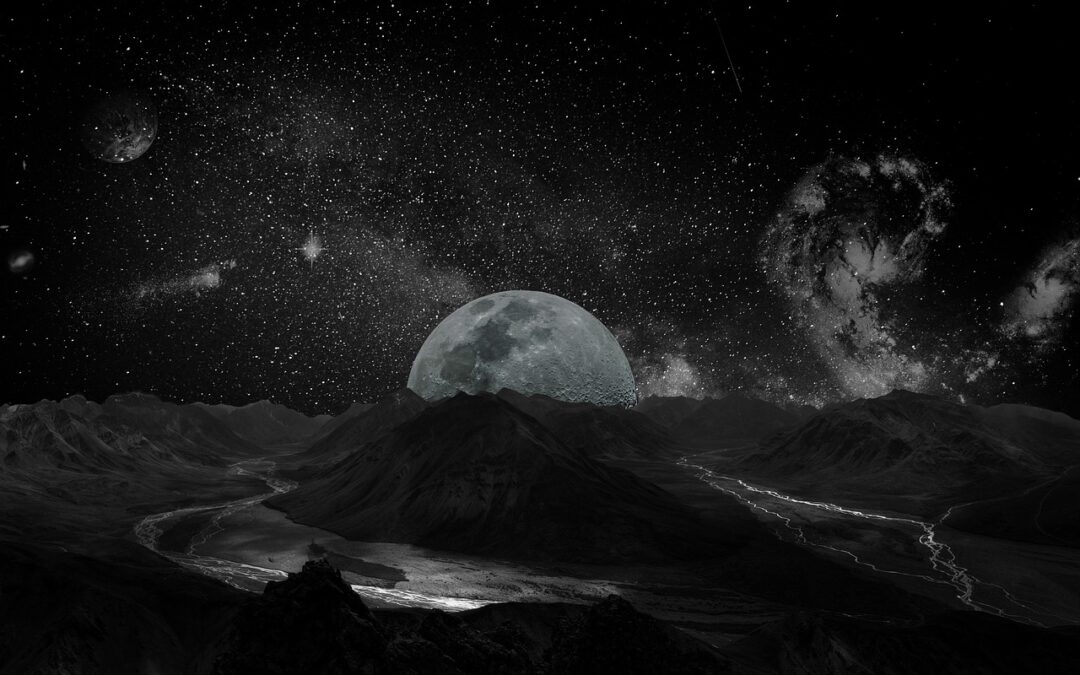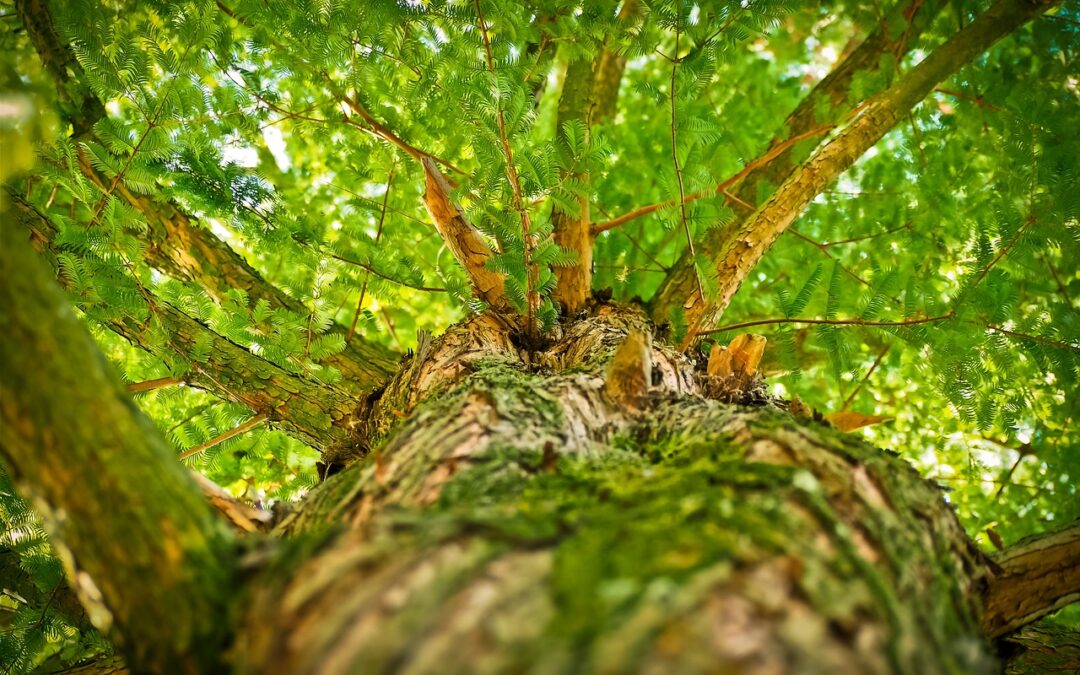Embark on a remarkable journey through the captivating realms of Indian culture, where ancient wisdom, vibrant traditions, and profound artistry converge. In this exploration, we delve into 25 intriguing facts that reveal the richness and diversity of Indian heritage. From the sacred Sanskrit language to the grandeur of Indian weddings, from the spellbinding melodies of Hindustani classical music to the intricate sculptures of the Khajuraho temples, each facet unfolds a tapestry of cultural brilliance. Join us as we immerse ourselves in the wonders of Indian culture, celebrating its timeless beauty and eternal wisdom.
Table of Contents
- The Sanskrit language is the foundation of many Indian languages and has a profound influence on Hindu religious texts.
- Indian classical dance forms, such as Bharatanatyam, Kathak, Odissi, and Kathakali, are not only beautiful but also deeply rooted in Indian culture.
- Yoga originated in ancient India and has gained worldwide popularity as a holistic practice for physical, mental, and spiritual well-being.
- Indian cuisine is a delightful tapestry of flavours, spices, and regional diversity, making it one of the most diverse culinary traditions in the world.
- Ayurveda, the ancient Indian system of medicine, focuses on achieving balance and harmony in the body, mind, and spirit through natural remedies and lifestyle practices.
- The ancient Indian epic, the Mahabharata, is not only a gripping tale of heroes and villains but also a profound philosophical and moral guide.
- The art of mehndi, or henna, has been practised in India for centuries and is an integral part of Indian weddings and festivals.
- Indian classical music, with its elaborate ragas and talas, is a deeply spiritual art form that aims to transport listeners to a state of transcendence.
- The Kamasutra, an ancient Indian text on human sexual behaviour, is not merely a manual of physical intimacy but also explores the intricacies of relationships, love, and pleasure.
- The festival of Diwali, known as the Festival of Lights, is one of the most important and widely celebrated festivals in India, symbolizing the victory of light over darkness and good over evil.
- Indian textiles, such as silk, cotton, and wool, have a rich history and are renowned for their exquisite craftsmanship, intricate patterns, and vibrant colours.
- The game of chess, known as chaturanga in ancient India, originated in India and later spread to other parts of the world.
- The festival of Holi, also known as the Festival of Colors, is a joyous celebration of spring and new beginnings, where people come together to play with vibrant colours, dance, and indulge in sweets.
- Indian weddings are extravagant affairs, filled with vibrant colours, ornate decorations, music, dance, and elaborate rituals that vary across different regions and communities.
- The Indian film industry, popularly known as Bollywood, is the largest film industry in the world, producing a staggering number of movies each year that captivate audiences with their music, dance, and dramatic narratives.
- The Indian system of astrology, known as Vedic astrology or Jyotish, is a complex and ancient science that uses planetary positions and calculations to provide insights into an individual’s personality, relationships, and life events.
- The Indian system of traditional medicine, known as Ayurveda, not only focuses on physical health but also encompasses mental, emotional, and spiritual well-being.
- The Indian art of meditation has been practised for thousands of years, providing individuals with a profound tool for self-discovery, inner peace, and spiritual growth.
- The Indian architectural masterpiece, the Khajuraho temples, renowned for their exquisite sculptures and intricate carvings, depict various aspects of life, including gods, goddesses, celestial beings, animals, and human emotions.
- The Indian martial art form of Kalaripayattu, believed to be one of the oldest fighting systems in existence, combines physical training, self-defence techniques, weaponry, and healing practices.
- The Indian classical dance forms, such as Bharatanatyam, Kathak, Odissi, Kathakali, and Manipuri, are not just artistic expressions but also mediums for storytelling, spiritual devotion, and cultural preservation.
- The Indian system of mathematics, often referred to as Vedic mathematics, has its roots in ancient texts called the Vedas and offers a unique and efficient approach to mathematical calculations.
- The Indian system of hand gestures and facial expressions, known as mudras, plays a crucial role in various performing art forms, such as classical dance, theatre, and storytelling.
- The Indian system of music, known as Hindustani classical music, is a highly sophisticated art form that encompasses a vast repertoire of melodies, intricate rhythms, improvisation, and spiritual elements.
- The Indian system of storytelling, known as Katha, has been an integral part of Indian culture for centuries, conveying moral, spiritual, and cultural values through oral traditions and performances.
The Sanskrit language is the foundation of many Indian languages and has a profound influence on Hindu religious texts.
Details: Sanskrit, an ancient language, is considered sacred in Hinduism. It is known for its precise grammar, rich vocabulary, and intricate poetry. The Vedas, Upanishads, and other religious texts are primarily written in Sanskrit.
Hoax: Sanskrit is a dead language with no relevance today. In reality, Many Languages have roots in Sanskrit Language and people still learn Sanskrit to enhance their vocal connectivity with wellness and culture.
How it was Discovered: Sanskrit was the language of the intellectual and spiritual elite in ancient India, and its significance can be traced back to the Rigveda, the oldest of the Vedas.
Indian classical dance forms, such as Bharatanatyam, Kathak, Odissi, and Kathakali, are not only beautiful but also deeply rooted in Indian culture.
Details: These dance forms are considered sacred and have a rich history that dates back thousands of years. They combine intricate footwork, graceful movements, expressive hand gestures, and elaborate costumes to tell stories from Indian mythology and folklore.
Hoax: Indian classical dance forms are just a form of entertainment. In reality, they are considered a spiritual practice that aims to connect the dancer with the divine and evoke a sense of bliss and transcendence.
How it was Discovered: These dance forms have been passed down through generations, preserved and nurtured by dedicated gurus (teachers) who have maintained the purity and authenticity of the art form.
Yoga originated in ancient India and has gained worldwide popularity as a holistic practice for physical, mental, and spiritual well-being.
Details: The ancient sage Patanjali is credited with systematizing yoga in his Yoga Sutras. Yoga encompasses physical postures (asanas), breath control (pranayama), and meditation techniques that promote overall health and harmony.
Hoax: Yoga is just a form of exercise. In reality, yoga is a comprehensive science that addresses all aspects of human existence, aiming to unite the body, mind, and soul.
How it was Discovered: The origins of yoga can be traced back to the Indus Valley Civilization, where archaeological artefacts, such as seals depicting figures in yoga postures, have been found.
Indian cuisine is a delightful tapestry of flavours, spices, and regional diversity, making it one of the most diverse culinary traditions in the world.
Details: Each region in India has its own distinct culinary style and traditional dishes. From the fiery curries of the south to the aromatic biryanis of the north, Indian cuisine offers a wide range of vegetarian and non-vegetarian options to tantalize the taste buds.
Hoax: Indian food is only about curry and spices. In reality, Indian cuisine is a harmonious blend of spices, herbs, grains, legumes, and vegetables, resulting in a balanced and nutritious diet.
How it was Discovered: Indian cuisine evolved over centuries, influenced by various invaders, traders, and cultural exchanges, resulting in a culinary heritage that is as diverse as the country itself.
Ayurveda, the ancient Indian system of medicine, focuses on achieving balance and harmony in the body, mind, and spirit through natural remedies and lifestyle practices.
Details: Ayurveda recognizes the uniqueness of each individual and emphasizes personalized treatments using herbs, oils, massage, dietary recommendations, and yoga practices.
Hoax: Ayurveda is just an alternative medicine system with no scientific basis. In reality, Ayurveda has a holistic approach that considers the interconnectedness of the body, mind, and spirit, and its principles have been validated by modern scientific research.
How it was Discovered: Ayurveda has its roots in the ancient texts called the Charaka Samhita and Sushruta Samhita, which were compiled by ancient sages and scholars.
The ancient Indian epic, the Mahabharata, is not only a gripping tale of heroes and villains but also a profound philosophical and moral guide.
Details: The Mahabharata, attributed to the sage Vyasa, narrates the epic battle between the Pandavas and the Kauravas, exploring complex themes of duty, righteousness, and the nature of life.
Hoax: The Mahabharata is just a fictional story. In reality, it serves as a treasure trove of wisdom, containing the Bhagavad Gita, a sacred scripture that offers profound insights into life’s purpose and the path to self-realization.
How it was Discovered: The Mahabharata was traditionally transmitted orally through generations before being compiled in its written form. Its origins can be traced back to ancient times.
The art of mehndi, or henna, has been practised in India for centuries and is an integral part of Indian weddings and festivals.
Details: Mehndi involves the application of intricate designs using henna paste on the hands and feet. It is believed to bring good luck, symbolize joy and love, and is an important cultural tradition.
Hoax: Mehndi is merely a form of temporary body art. In reality, it holds deep cultural significance, fostering a sense of community and celebration during auspicious occasions.
How it was Discovered: The origins of mehndi can be traced back to ancient times, and its popularity spread across different regions of India and neighbouring countries.
Indian classical music, with its elaborate ragas and talas, is a deeply spiritual art form that aims to transport listeners to a state of transcendence.
Details: Indian classical music is based on a system of melodic modes (ragas) and rhythmic cycles (talas). It offers a profound aesthetic experience and is believed to have therapeutic and meditative qualities.
Hoax: Indian classical music is monotonous and lacks variation. In reality, it is a highly nuanced and complex art form that allows for improvisation and evokes a range of emotions.
How it was Discovered: Indian classical music has evolved over thousands of years, with its roots in ancient scriptures such as the Natya Shastra, written by the sage Bharata Muni.
The Kamasutra, an ancient Indian text on human sexual behaviour, is not merely a manual of physical intimacy but also explores the intricacies of relationships, love, and pleasure.
Details: The Kamasutra, written by Vatsyayana, provides a comprehensive guide to various sexual positions, techniques, and arts of seduction, but it also emphasizes the importance of mutual respect, consent, and emotional connection.
Hoax: The Kamasutra is a pornographic book. In reality, it is a nuanced exploration of human desires, sensuality, and the art of living a fulfilling life.
How it was Discovered: The Kamasutra was written in the 2nd century CE, drawing upon earlier Indian texts on love and sexuality, and remains a valuable cultural and historical document.
The festival of Diwali, known as the Festival of Lights, is one of the most important and widely celebrated festivals in India, symbolizing the victory of light over darkness and good over evil.
Details: Diwali is marked by the lighting of diyas (oil lamps), colourful decorations, fireworks, exchanging gifts, and feasting. It is a time of joy, togetherness, and the celebration of inner light.
Hoax: Diwali is only about fireworks and extravagance. In reality, it is a time for families to come together, reflect on the past year, and seek blessings for a prosperous and harmonious future.
How it was Discovered: Diwali has ancient roots and is associated with various legends and mythological stories, including the return of Lord Rama to Ayodhya after his victory over the demon king Ravana.
Indian textiles, such as silk, cotton, and wool, have a rich history and are renowned for their exquisite craftsmanship, intricate patterns, and vibrant colours.
Details: Each region in India has its unique textile traditions, such as the intricate brocades of Banaras, the block prints of Rajasthan, and the delicate weaves of Assam. Indian textiles are treasured for their beauty and quality.
Hoax: Indian textiles are mass-produced and lack creativity. In reality, Indian textiles are created with meticulous attention to detail, often using traditional handloom techniques that have been passed down through generations.
How it was Discovered: The art of textile weaving has been practised in India for thousands of years, with references to fine fabrics found in ancient texts and archaeological discoveries.
The game of chess, known as chaturanga in ancient India, originated in India and later spread to other parts of the world.
Details: Chess is a strategic board game played by two players, each controlling an army of pieces. It requires careful planning, analytical thinking, and foresight to outmanoeuvre the opponent.
Hoax: Chess is a simple game with no cultural significance. In reality, chess symbolizes the art of war and strategy, reflecting the intellectual prowess and analytical thinking valued in Indian culture.
How it was Discovered: The origins of chess can be traced back to ancient Indian texts, such as the Mahabharata, where references to a similar game called chaturanga are found.
The festival of Holi, also known as the Festival of Colors, is a joyous celebration of spring and new beginnings, where people come together to play with vibrant colours, dance, and indulge in sweets.
Details: Holi is marked by the throwing of coloured powders and water at each other, accompanied by singing, dancing, and traditional music. It is a time to let go of inhibitions, forgive and forget, and celebrate the arrival of spring.
Hoax: Holi is just a chaotic and messy festival. In reality, Holi is a symbolic representation of the triumph of good over evil, fostering a sense of unity, love, and joy among people.
How it was Discovered: Holi has ancient roots and is associated with various legends and mythological stories, including the playful antics of Lord Krishna and his companions.
Indian weddings are extravagant affairs, filled with vibrant colours, ornate decorations, music, dance, and elaborate rituals that vary across different regions and communities.
Details: Indian weddings are multi-day celebrations that involve pre-wedding ceremonies, the exchange of vows, elaborate feasts, and post-wedding rituals. They are a celebration of love, union, and the coming together of families.
Hoax: Indian weddings are superficial and materialistic. In reality, they are deeply rooted in traditions, customs, and cultural values, emphasizing the importance of family, community, and lifelong commitments.
How it was Discovered: The tradition of grand weddings in India can be traced back to ancient times, with references in historical texts and depictions in art and literature.
The Indian film industry, popularly known as Bollywood, is the largest film industry in the world, producing a staggering number of movies each year that captivate audiences with their music, dance, and dramatic narratives.
Details: Bollywood films are known for their vibrant song and dance sequences, melodrama, and larger-than-life storytelling. They often reflect the diverse cultures, traditions, and social issues of India.
Hoax: Bollywood films are all about glamour and escapism. In reality, they play a significant role in shaping popular culture, spreading social messages, and showcasing the talent of actors, musicians, and filmmakers.
How it was Discovered: The Indian film industry has a rich history dating back to the early 20th century, with the first silent film being released in 1913. Since then, Bollywood has grown into a global phenomenon.
The Indian system of astrology, known as Vedic astrology or Jyotish, is a complex and ancient science that uses planetary positions and calculations to provide insights into an individual’s personality, relationships, and life events.
Details: Vedic astrology involves the analysis of birth charts, known as horoscopes, which are based on the precise time, date, and location of an individual’s birth. It is believed to help individuals understand their strengths, weaknesses, and potential future outcomes.
Hoax: Astrology is a pseudoscience with no basis in reality. In reality, Vedic astrology is deeply ingrained in Indian culture, with many people seeking guidance from astrologers for important life decisions and events.
How it was Discovered: Vedic astrology is an ancient system of knowledge passed down through generations, with its roots in the Vedas and other ancient texts.
The Indian system of traditional medicine, known as Ayurveda, not only focuses on physical health but also encompasses mental, emotional, and spiritual well-being.
Details: Ayurveda emphasizes the balance between the body, mind, and spirit to achieve optimal health. It utilizes natural remedies, dietary guidelines, lifestyle practices, and therapies like massage, meditation, and yoga.
Hoax: Ayurveda is just a form of alternative medicine with no scientific basis. In reality, Ayurveda has a holistic approach that considers the individual as a whole, addressing the root causes of diseases and promoting overall wellness.
How it was Discovered: Ayurveda has its origins in ancient texts, such as the Charaka Samhita and Sushruta Samhita, which contain detailed knowledge about the human body, herbs, and therapeutic practices.
The Indian art of meditation has been practised for thousands of years, providing individuals with a profound tool for self-discovery, inner peace, and spiritual growth.
Details: Meditation techniques in India vary from the focused concentration of Dharana to the self-inquiry of Jnana meditation and the transcendental meditation of Dhyana. These practices help quiet the mind, cultivate mindfulness, and expand consciousness.
Hoax: Meditation is only for religious or spiritual people. In reality, meditation is a universal practice that can benefit people from all walks of life, reducing stress, improving mental clarity, and promoting overall well-being.
How it was Discovered: The practice of meditation has its roots in ancient Indian scriptures and was passed down through generations by yogis, sages, and spiritual masters.
The Indian architectural masterpiece, the Khajuraho temples, renowned for their exquisite sculptures and intricate carvings, depict various aspects of life, including gods, goddesses, celestial beings, animals, and human emotions.
Details: The Khajuraho temples, built between the 9th and 12th centuries, showcase the exceptional craftsmanship of the Chandela dynasty. The sculptures depict scenes from mythology, daily life, and the pursuit of spiritual enlightenment.
Hoax: The Khajuraho temples are just erotic sculptures. In reality, the temples represent a harmonious integration of spirituality, art, and human emotions, reflecting the cultural and religious diversity of ancient India.
How it was Discovered: The Khajuraho temples were rediscovered in the 19th century and have since gained recognition as a UNESCO World Heritage Site, attracting visitors from around the world.
The Indian martial art form of Kalaripayattu, believed to be one of the oldest fighting systems in existence, combines physical training, self-defence techniques, weaponry, and healing practices.
Details: Kalaripayattu encompasses various elements, including strikes, kicks, grappling, weaponry, and intricate movements. It is not only a means of self-defence but also a path for personal transformation and spiritual development.
Hoax: Kalaripayattu is just another martial art form. In reality, it holds deep cultural and historical significance, preserving ancient combat techniques and embodying the philosophy of discipline, focus, and mind-body integration.
How it was Discovered: Kalaripayattu has a long history, originating in the southern state of Kerala and finding mention in ancient texts and legends.
The Indian classical dance forms, such as Bharatanatyam, Kathak, Odissi, Kathakali, and Manipuri, are not just artistic expressions but also mediums for storytelling, spiritual devotion, and cultural preservation.
Details: Each classical dance form has its unique style, costumes, gestures, and musical accompaniments. They blend rhythm, grace, and expression to convey stories from mythology, folklore, and social themes.
Hoax: Indian classical dance is outdated and irrelevant. In reality, these dance forms are dynamic and evolving, with dedicated practitioners working to keep the traditions alive while also incorporating contemporary themes and interpretations.
How it was Discovered: Classical dances in India have evolved over centuries, with their origins found in ancient texts, temple sculptures, and royal patronage.
The Indian system of mathematics, often referred to as Vedic mathematics, has its roots in ancient texts called the Vedas and offers a unique and efficient approach to mathematical calculations.
Details: Vedic mathematics utilizes various techniques and principles to simplify complex mathematical operations, such as multiplication, division, and square roots. It provides alternative methods that are often faster and more intuitive.
Hoax: Vedic mathematics is just a collection of tricks. In reality, it is a profound system of mathematical knowledge that emphasizes logical reasoning, mental agility, and a deep understanding of number patterns.
How it was Discovered: Vedic mathematics was passed down through generations of scholars and mathematicians in ancient India, contributing to the advancement of mathematical concepts and techniques.
The Indian system of hand gestures and facial expressions, known as mudras, plays a crucial role in various performing art forms, such as classical dance, theatre, and storytelling.
Details: Mudras are symbolic hand gestures that convey specific meanings, emotions, and narrative elements. They enhance the communication and expression of the performer, adding depth and beauty to the art form.
Hoax: Mudras are meaningless gestures. In reality, mudras are an ancient language of expression, allowing performers to convey intricate emotions, characters, and stories without the need for words.
How it was Discovered: Mudras have been an integral part of Indian performing arts for centuries, with references found in ancient texts and treatises on dance and theatre.
The Indian system of music, known as Hindustani classical music, is a highly sophisticated art form that encompasses a vast repertoire of melodies, intricate rhythms, improvisation, and spiritual elements.
Details: Hindustani classical music is characterized by the use of ragas (melodic structures), talas (rhythmic patterns), and the exploration of different moods and emotions. It provides a deeply spiritual experience for both the performer and the listener.
Hoax: Indian classical music is monotonous and inaccessible. In reality, it is a complex and nuanced art form that requires years of dedicated practice and study, offering a profound journey of self-expression and aesthetic pleasure.
How it was Discovered: The origins of Hindustani classical music can be traced back to ancient texts such as the Natyashastra and the Sama Veda, which contain detailed treatises on music and its therapeutic qualities.
The Indian system of storytelling, known as Katha, has been an integral part of Indian culture for centuries, conveying moral, spiritual, and cultural values through oral traditions and performances.
Details: Katha involves the art of storytelling through various mediums, including folk tales, epics, myths, and legends. It combines narration, music, dance, and dramatic elements to engage and captivate the audience.
Hoax: Storytelling is a dying art in the digital age. In reality, storytelling continues to thrive in India, with modern adaptations blending traditional elements with contemporary storytelling techniques.
How it was Discovered: The tradition of Katha has been passed down through generations, with storytellers preserving ancient wisdom and entertaining audiences through their artistry and imaginative narratives.













0 Comments